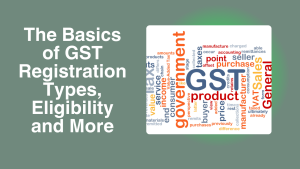Profit is a very strong indicator of business stability, cashflow health, and operational efficiency of any retail business. And as a businessman, it is crucial to know that without profit hygiene, a business cannot sustain for long.
Despite knowing this basic yet vital mantra, retail businessmen fail to see through it and fail to implement basic yet useful strategies that can up their profit game. This can be due to lack of guidance. And this is exactly what we are going to discuss today in our blog.
So, let’s discuss top strategies that will surely help you increase your retail profit margins. But before that, let’s understand what is a profit margin and are there different types of profit margins in retail?
So, what’s with the hype? What is retail profit margin?
Fundamentally, retail profit margin is referred to as the percentage of business revenue minus all kinds of expenses like costs of goods, salary of employees, etc. There are three different kinds of profit margins which are Gross profit margin, Operating profit margin, and Net profit margin.
Gross profit margin – It is basically the revenue left after deducting the product cost. If you have data related to this profit margin, it can significantly help you make better business decisions of cost control, pricing strategy as well as product optimisation.
Operating profit margin – This margin is basically the revenue left after deducting the product cost and operating expenses.
Net profit margin – This is the final profit margin left after deducting the product cost and all the expenses put together.
Effective strategies on increasing your retail profit margin (that actually works)
Increasing the price of your product marginally
While simply raising prices might seem like an easy solution, it’s often a delicate balancing act. Carefully analysing competitor pricing and conducting test price increases on specific products can provide valuable insights. Bundling lower-margin items into kits can be an effective strategy to increase overall basket value. Ultimately, a comprehensive approach that considers both pricing strategy and product positioning is essential for driving profitability.
Read more: How To Increase Sales Of Your Retail Store
Pay attention to price strategies
You always have room to optimise your operating expenses. These can include utility bills, advertisement and marketing expenses. If you don’t know how to optimise your price strategies, then learn to adopt more dynamic and competitive pricing based on seasonality, demand and your customer behaviour.
Try and minimise the frequency of discounts, and offer only personalised offers to save profit margins.
Increase your brand value
Crafting a compelling customer experience is paramount in today’s competitive retail landscape. By creating a visually appealing store environment with a distinct brand identity, retailers can forge emotional connections with customers. Strategic use of colour, engaging product displays, and captivating signage can transform a shopping trip into a memorable experience.
Needless to say that building trust and credibility is essential for long-term success. Collaborating with influential figures, showcasing customer feedback, and delivering exceptional service are key components of this process. Once customers have faith in a brand, they are more likely to return and even accept premium pricing for the perceived value and service offered.
Increase your order value for better retail profit margins
Once the perception of your brand is increased in the market, you will be able to attract more customers. More customers means more sales, more sales equals more profits. You can try and implement the average transaction value with upselling strategies. If you have no idea how to do that, then all you need to do is find a good program or course for your staff and invest in their training. Trust us, your investment will go a long way, reaping your substantial returns.
No point in keeping products with low marginal value
It is very important to analyse the overall performance of all your products regularly. It will help you identify those with lower profit margins. As you identify products with low profit margins, you altogether eliminate them and pull in other products that may have higher margins. Also, keep in mind that such products should be useful for the end consumer. Because without the utility factor, you won’t get higher sales either.
Be adoptive of technology
Invest in good quality retail billing softwares, implement omni-channel strategies to make your business more rewarding profitability wise. This is the age of AI, so don’t shy away from implementing AI based tools. These will only increase your business efficiency. Apart from this, channelise your attention in forecasting product demands, regularly check supplier performance.
Conclusion
Needless to say, increasing your retail profit margins require skills, persistence and a well-planned strategic approach. Remember, the key to success lies in combining cost control, revenue generation, and customer satisfaction. Continuous monitoring and adaptation are essential to navigate the dynamic retail landscape and achieve long-term profitability.
Frequently Asked Questions
A margin of 10% is considered average while a margin of 20% is considered quite good.
Owing to the increase of online shopping, the retail profit margin may have experienced some impact but still there is a lot of scope for success in it.
There are many factors owing to which you can experience decreased profit margins such as wrong pricing strategy, increased overhead cost, not investing in billing software, lack of market knowledge, etc.


